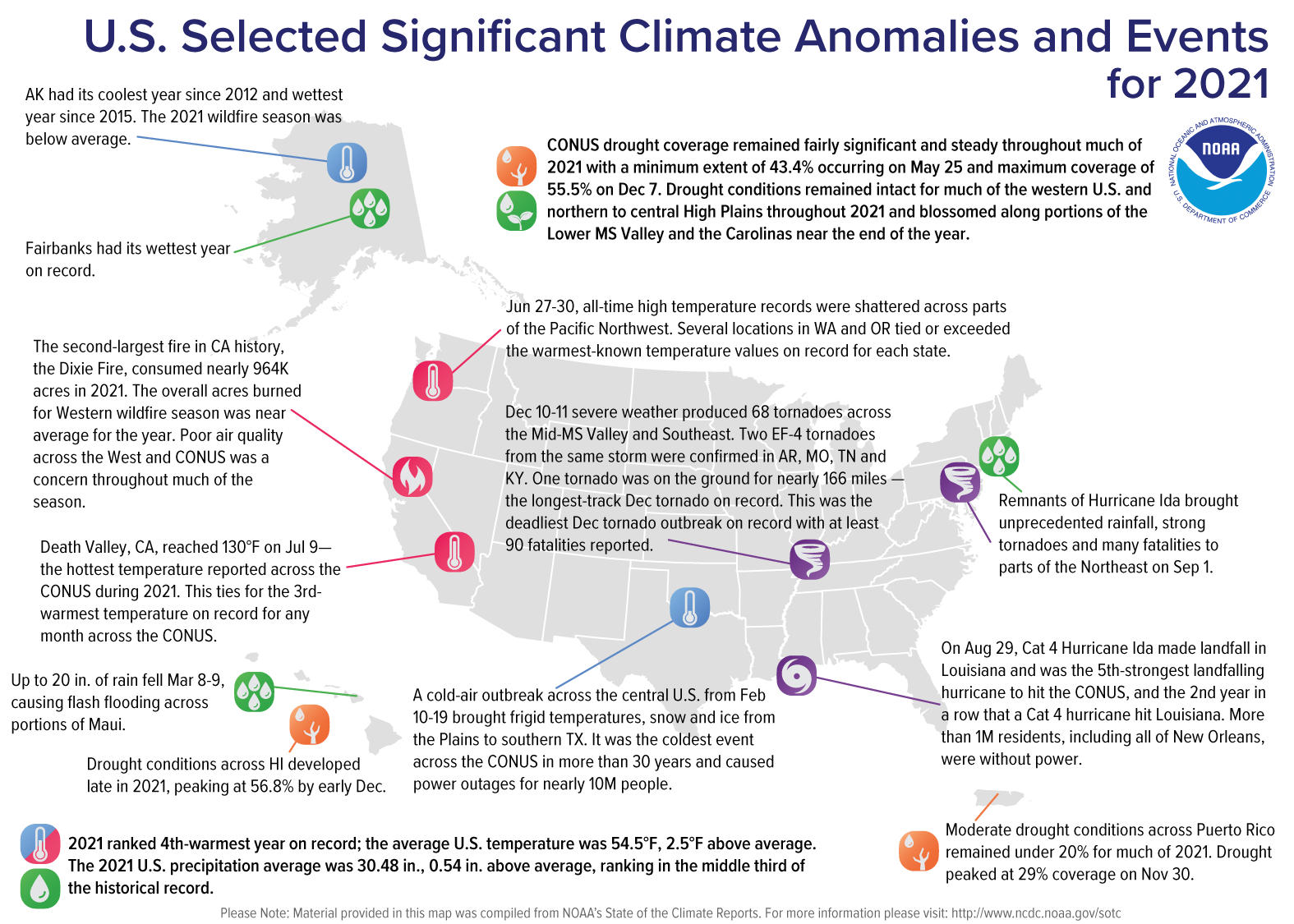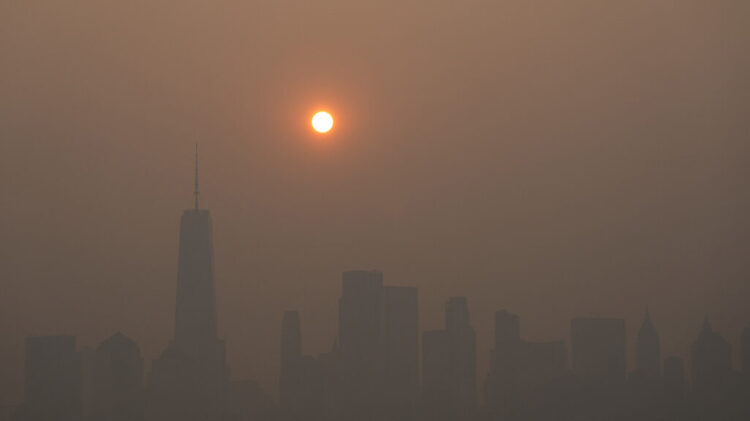Weather disasters cost the U.S. more than $145 billion in 2021

From winter storms to wildfires, extreme weather took its toll on the United States in 2021. Last year, a whopping 20 different weather and climate disaster events caused losses exceeding $1 billion apiece.
Those events included eight severe weather events, four tropical systems, three tornado outbreaks, two floods, one drought/heat wave, one winter storm and a massive wildfire that swept through the Western states.
The total cost of all these weather and climate disasters combined exceeded $145 billion, which is the third highest yearly total on record, according to the National Centers for Environmental Information, which is run by the National Oceanic and Atmospheric Administration. The U.S. has only ever seen more billion-dollar weather disasters once before, and that was in 2020, when 22 events caused billions more in damages.
Hurricane Ida, which caused devastation along the Gulf Coast in Louisiana and Mississippi and, later, flooding in the Mid-Atlantic and Northeast, proved to be last year’s most costly event, racking up $75 billion in damages. The human cost was staggering as well, with 91 people reportedly being killed by Ida.
In total, 688 people died from the weather and climate events in 2021, which was the highest death toll in a decade for the contiguous U.S.
Meanwhile, the mid-February winter storm and cold snap proved to be the costliest winter storm on record. The historic winter weather cost $24 billion after it left 4.5 million Texans without power and unable to heat their homes, resulting in frozen pipes bursting.
Other 2021 weather events noted as “significant climate anomalies” by the NOAA included Alaska’s coolest year in a decade and all-time high temperatures across the Pacific Northwest in late June. Overall, the year was the fourth-warmest on record across the U.S.
The U.S. has been keeping track of weather and climate extremes over the past 112 years with something called the U.S. Climate Extremes Index, or USCEI.
The USCEI tracks extreme temperature, precipitation, drought and landfalling tropical systems in the contiguous U.S. The USCEI for 2021 ranked 115% above average and the third-highest on record. The year with the highest USCEI percentage yet recorded was 2012, while the lowest came in 1967.
Follow Meteorologist Jason Meyers on Twitter or watch one of his entertaining and educational YouTube videos.







